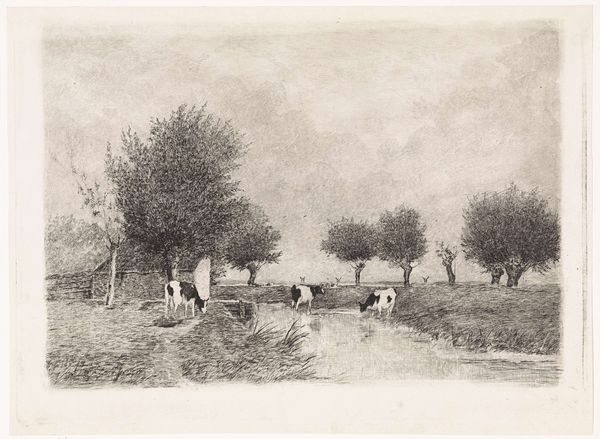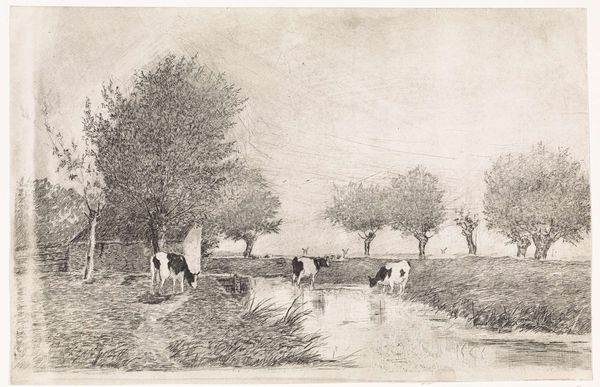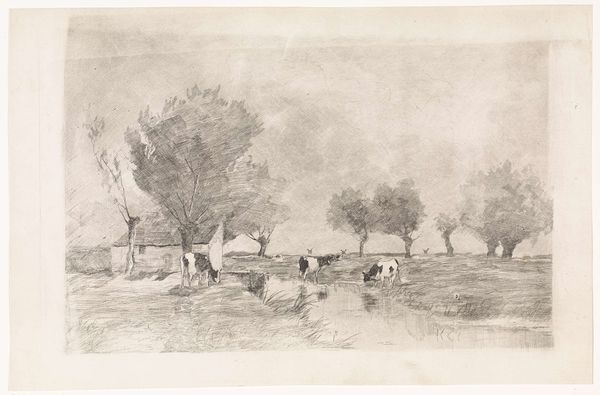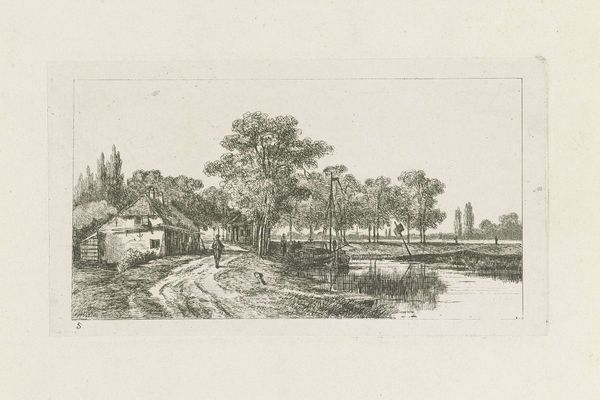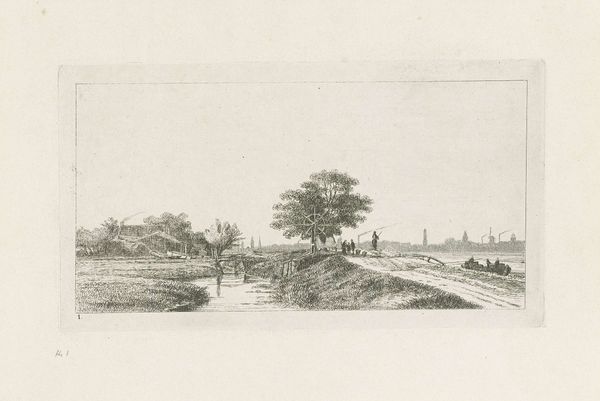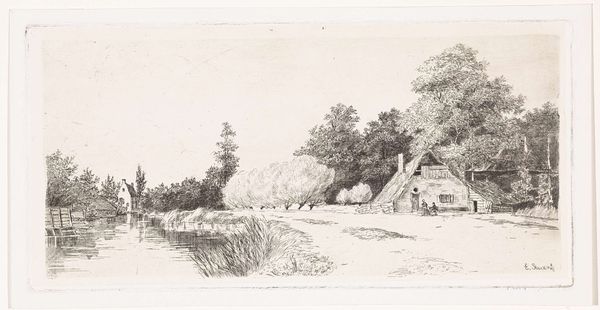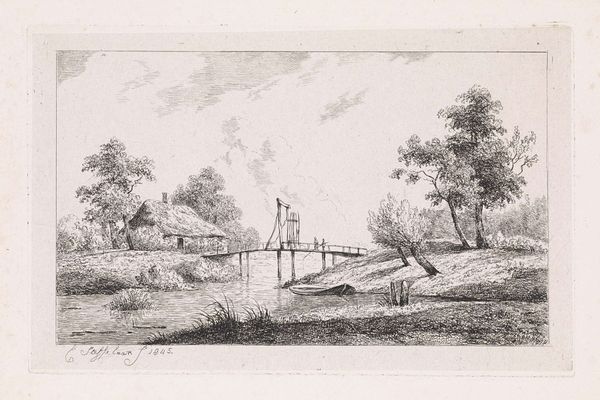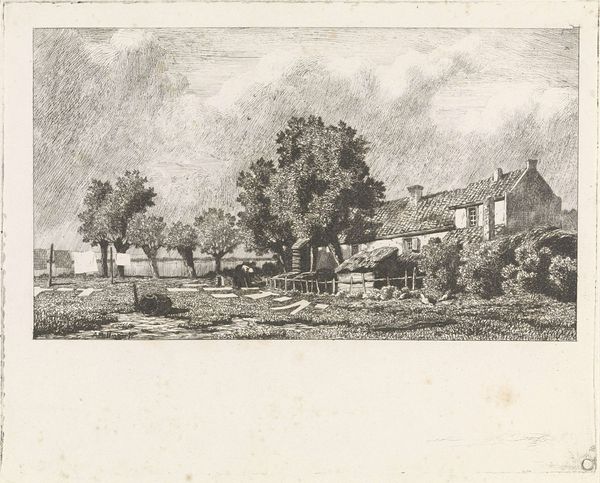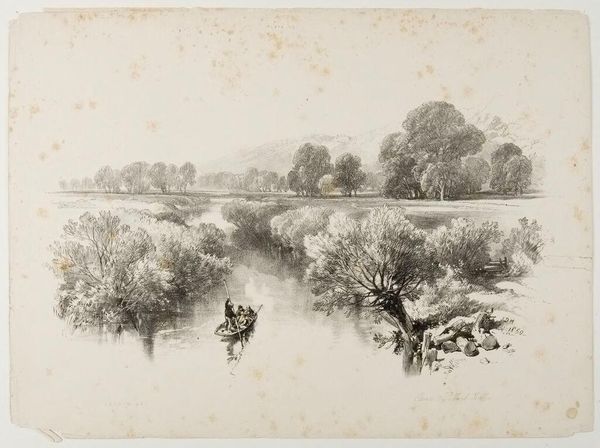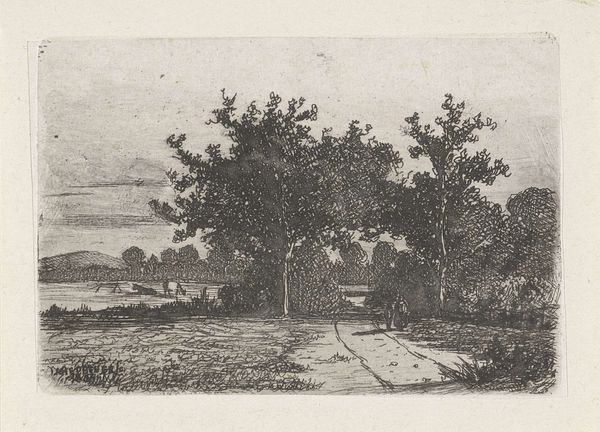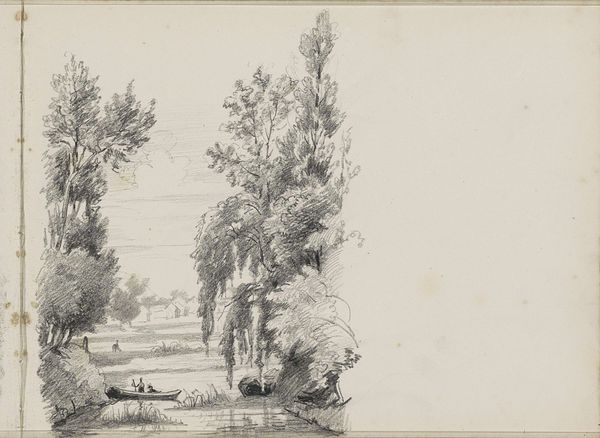
print, etching
#
dutch-golden-age
# print
#
etching
#
landscape
#
genre-painting
#
realism
Dimensions: height 249 mm, width 377 mm
Copyright: Rijks Museum: Open Domain
Editor: We're looking at "Landscape with Three Cows near a Ditch," an etching print made sometime between 1859 and 1890. I find it wonderfully serene, but it's also clearly portraying working animals, you know? What is the statement of a simple scene like this during the late 19th century? Curator: That’s a keen observation. It seems very unassuming, but this idyllic scene actually participates in a complex visual tradition and burgeoning market for landscape imagery. Consider the rise of Realism and its relationship to the Dutch Golden Age aesthetic in that period. Editor: Oh! So, in some ways it is nostalgic, but how can that influence societal change, or challenge norms, from an art history point of view? Curator: Precisely. It's a revival of distinctly Dutch subject matter that can be read in different ways depending on the viewers: a desire to reinforce a particular vision of national identity, or perhaps a longing for a past idealized in contrast to the increasing industrialization of the period. The deliberate use of etching –a readily reproducible medium– is interesting. Who do you think could have consumed this art and why? Editor: Given that prints can be reproduced, wouldn’t the intended audience be common people and farmers, to portray their role? It also looks like a "snapshot" of a commonplace subject and wouldn’t be very valuable to landowners… Curator: That's the heart of the question, isn't it? Realism elevated the everyday, and the accessibility of prints broadened art consumption. But consider which social classes had access to leisure and disposable income to acquire art, even relatively inexpensive prints. What is the cultural statement if city-dwellers, instead of rural farmers, became the main consumers of the landscape images? Editor: Right, it complicates it. I see how a seemingly simple image speaks volumes about cultural values and socio-economic realities! Thanks! Curator: Absolutely. Analyzing the consumption and circulation of such works sheds light on how art shaped collective understanding and reinforces social hierarchy.
Comments
No comments
Be the first to comment and join the conversation on the ultimate creative platform.
